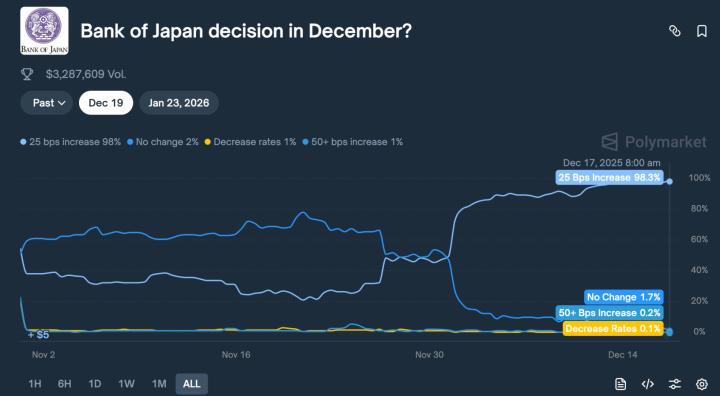The shoe has dropped, Trump officially signed an executive order to establish a strategic reserve of Bitcoin, why is the market falling?
This article is machine translated
Show original
Block TRON HT AR RON ONG:
The US President Trump has just signed an executive order to formally establish a US strategic Bitcoin reserve. This news has quickly attracted attention, not only because of the policy implications behind it, but also because the market has reacted unexpectedly after the announcement - the price of Bitcoin has plummeted, with a drop of more than 5% within 10 minutes. This seems contradictory: why has such a major positive policy failed to drive the market up, and instead triggered a sell-off?
According to David Sacks' post, the core content of this executive order can be summarized in a few key points. First, the US government will use the Bitcoin obtained through criminal or civil asset forfeiture procedures to establish a strategic reserve, which means that the entire plan does not require the use of taxpayer funds. It is estimated that the US government currently holds about 200,000 Bitcoins, but has never conducted a comprehensive audit before. To this end, the executive order requires a thorough investigation of the digital assets held by the government to ensure transparency.
Secondly, the Bitcoin in the reserve will be treated as a store of value, similar to "digital gold", and will not be easily sold. This decision aims to correct the losses caused by the premature sale of Bitcoin in the past - it is said that this has caused potential value losses of over $17 billion for taxpayers. The Treasury Department and the Department of Commerce have also been authorized to develop plans to acquire more Bitcoin without increasing the burden on taxpayers. In addition, the executive order also establishes a US Digital Asset Reserve to manage other digital assets obtained through forfeiture procedures, but will not actively purchase additional assets.
Trump has fulfilled his campaign promise - to make the US the "crypto capital of the world". David Sacks specifically mentioned the key roles played by Treasury Secretary Scott Bessent, Commerce Secretary Howard Lutnick, and Task Force Executive Director Bo Hines in pushing this policy forward. This executive order is seen as an important milestone in the Trump administration's support for the digital asset industry and embrace of cutting-edge technology.
Why did the market decline? Logically, this executive order can be considered a major positive for Bitcoin. It not only confirms the US government's recognition of Bitcoin as a strategic asset, but also eliminates market concerns about government sell-off pressure by prohibiting the sale of existing reserves. More importantly, it gives Bitcoin a national reserve status similar to gold, which undoubtedly enhances its legitimacy and value support in the long run. However, the market reaction was the opposite, with the price of Bitcoin plummeting by more than 5% after the announcement. Why is this?
A reasonable explanation is that there was a gap between the market's previous expectations and the actual policy. Before the executive order was signed, the crypto community and investors generally speculated that the Trump administration might take more aggressive measures, such as using fiscal funds to directly purchase Bitcoin to significantly increase the reserve size. This expectation was not unfounded, as Trump had expressed strong support for cryptocurrencies during the election campaign, and the concept of "strategic reserve" was easy to associate with the government's large-scale entry. However, the executive order clearly stipulates that the source of the reserve funds is limited to forfeiture proceeds, and any additional acquisition of Bitcoin must be "budget neutral", meaning the government will not directly invest new funds to purchase Bitcoin.
For many investors, this is a typical case of "good news turns bad news". The market may have already priced in the expectation of "government large-scale purchase of Bitcoin" previously, and when the actual policy was implemented, although the direction was positive, it did not meet the most optimistic expectations. As a result, some investors chose to take profits or cut losses, leading to a rapid price correction.
From a logical perspective, there may be other potential factors behind the market decline. First, the price of Bitcoin has accumulated significant gains over the past period, and any major news could trigger a short-term adjustment. Secondly, the current global economic environment is complex and volatile, and investors may be more cautious about risk assets, and even positive news may not be able to completely reverse market sentiment. In addition, the specific implementation details of the executive order are not yet clear, such as the audit results and future plans for acquiring Bitcoin, and these uncertainties may cause some investors to choose to wait and see rather than immediately increase their positions.
Trump's signing of the executive order to establish a strategic Bitcoin reserve is a milestone in US digital asset policy. It not only fulfills his campaign promise, but also provides policy endorsement for the long-term value of Bitcoin. However, the short-term market decline reminds us that the subtle differences between investors' psychological expectations and the actual policy details can often cause waves in the volatile crypto market. For Bitcoin, this may only be a new starting point. In the future, as the audit is completed and the policy details are implemented, whether its position as "digital gold" can be truly solidified remains to be seen.
Sector:

Source
Disclaimer: The content above is only the author's opinion which does not represent any position of Followin, and is not intended as, and shall not be understood or construed as, investment advice from Followin.
Like
Add to Favorites
Comments
Share
Relevant content







